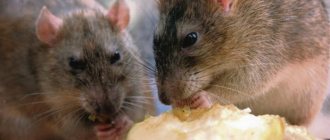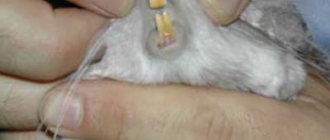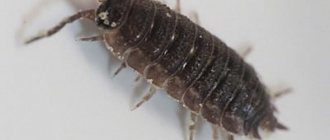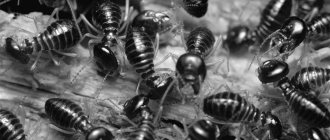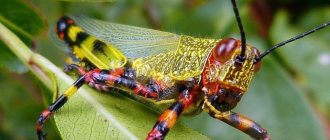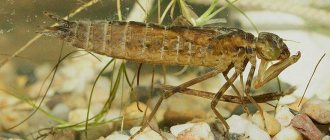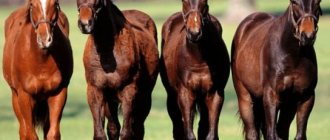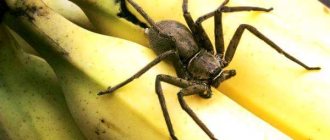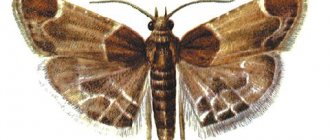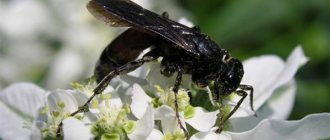- home
- Chinchilla
- Character and features
03/21/2019 Two types of chinchillas live in natural conditions - short-tailed (large) and long-tailed (shore). For home breeding, animals from the long-tailed breed are taken.
How it all began
The ancestors of chinchillas first appeared about 41 million years ago and were among the first rodents to inhabit South America. The chinchilla family (Chinchillidae) belongs to the superfamily Chinchilloidea, which belongs to Caviomorpha. Caviomorpha contains such representatives as:
- Pacarana;
- Porcupine;
- Pak and many others.
In 2012, two new ancient species of South American rodents were described, including the oldest chinchilla. These two rodents belong to the group known as Caviomorpha, which was discussed earlier.
The researchers named the ancient chinchilla Eoviscaccia frassinettii, in honor of Daniel Frassinetti, a paleontologist at the National Museum of Natural History of Chile. So who is she, wild chinchilla? Where do chinchillas live in the wild?
Living conditions in the natural environment
The rocky terrain of the Andes, which is inhabited by chinchillas, is not rich in vegetation. Most of the territory contains flora typical of desert areas. You can also find dwarf shrubs, succulents (plants that can accumulate moisture), lichens and some cereal plants.
The flora in the habitats of chinchillas is not very diverse, but this is enough for them to have a full life and nutrition. The mountain ranges where rodents live are characterized by a subtropical climate. In the summer months, the thermometer does not rise above 20-23 degrees, and in winter there is often frost - 20 degrees.
Almost the entire year, strong winds are observed in this territory, and precipitation is extremely rare, so such climatic conditions cannot be called favorable. But chinchillas have adapted to living in this area; they receive all the moisture they need for life from plants that accumulate liquid and dew.
Wild chinchillas are nocturnal animals
Chinchilla family
In this family there are now three genera of wild chinchillas, which include six species. Now let’s talk in more detail and in order about each type.
Royal chinchilla
In Latin - King chinchilla. It was this species that was previously called Chinchilla chinchilla and lived in the highlands of the Andes, in many countries of South America, at an altitude of more than 4000 meters. Royal chinchillas were the largest of all chinchilla species studied. The royal chinchilla's body was about 47 centimeters long. The ears are larger and rounded, and the tail is up to 8 centimeters long. The royal chinchilla's tail seemed even longer because the tail was covered with long fur. Not only did the royal chinchilla's tail have long fur, but the entire body of this animal was also covered with long fur of various colors.
Royal chinchilla
Since the 1500s, Spanish colonists hunted these wild chinchillas for their incredibly thick and soft fur, and in the 1800s, these chinchillas were no longer found in the wild. Today, only a stuffed royal chinchilla has survived, which is located in the German museum in Frankfurt am Main.
Short-tailed chinchilla
It is also called the big chinchilla. In Latin - Chinchilla chinchilla. Formerly known as Chinchilla brevicaudata. This type of chinchilla is the largest species, and these animals can be found in mountainous areas. These chinchillas have a more rounded and massive body, gray dense fur and a short tail. Short-tailed chinchillas are famous for their easy-going temperament - they are very obedient and affectionate.
Short-tailed chinchilla
Female short-tailed chinchillas bear their young a little longer than their long-tailed relatives. Pregnancy in a short-tailed chinchilla lasts about 130 days. Female short-tailed chinchillas are less fertile than long-tailed chinchillas, and give birth to one or two cubs. Previously, this species lived throughout almost the entire southern part of South America. Today the species is known only from a few individuals caught in 2001 and from surveillance cameras taken in 2011 in the National Park.
Two species of chinchillas have survived to this day in nature. These two species are sometimes very difficult to distinguish, since they have characteristics of both types of short-tailed chinchillas. The domestication of these animals played a major role in the mixing of species.
Long-tailed chinchilla
It is also called small or ordinary. In Latin - Chinchilla lanigera - common chinchilla. Other names are coastal chinchilla or small long-tailed - a species of rodents belonging to the chinchilla family. Better known as our pet.
Long-tailed chinchilla
Long-tailed and short-tailed chinchillas were once widely distributed in the wild along the central Andes and adjacent mountains. The ban on chinchilla hunting in 1929 unfortunately only increased the demand for chinchilla pelts. The long-tailed chinchilla was thought to be extinct in the wild, but was rediscovered in 1975.
Currently, in two separate places - in Northern and Central Chile, there are several scattered colonies of long-tailed chinchillas, although the Law "On the Protection of Chinchillas" was passed back in 1929. Unfortunately, this Law was not strictly enforced until 1983, when the National Chinchilla Sanctuary was founded.
From the history of chinchillas
Many people wonder where animals get such a romantic name - chinchilla. Some think - from the sounds that chinchillas can make, others think - from the quiet rustling of the amazingly beautiful fur that appears under the hand of a person stroking the animal. Let’s immediately dispel these speculations, albeit romantic, but far from the truth.
Chinchillas were once very numerous. About a thousand years ago, the Chinchas Indians living on the South American continent wore clothes made of unusually beautiful silver fur. They sewed it from the skins of rodents, reminiscent of large squirrels with fluffy tails and rounded ears. A few hundred years later, the Chinchas Indians were conquered by the Incas, who also liked the fur of the cute rodents. In memory of the conquest of the tribe, the Incas began to call the animals “Chinas”. After some time, the Incas were conquered by the Spanish conquerors. Among the treasures stolen from the Incas, the conquistadors discovered clothes made from the silvery fur of Chinas animals. The conquerors, fascinated by the beauty of fur, brought it to Europe, changing the name of the animals in their own way. This is how South American rodents, owners of precious fur, received the name “chinchillas”. Since then, the rodents' prosperity has ended. Their fur was highly valued in Europe. Chinchillas were exterminated by thousands, which soon led to their almost complete destruction. People only realized it at the beginning of the 20th century: laws were passed to protect chinchillas. And in 1923, one American began to breed chinchillas on farms. As it turned out, chinchillas can be kept and bred in captivity. And today, receiving precious fur from them to please fashionistas all over the world, chinchillas are bred on numerous farms in Europe and America.
Southern viscacha (viscacha)
Whiscacha is most active during the daytime, with peak activity occurring around sunrise and sunset. It feeds on grass, mosses and lichens. The length of the southern viscacha reaches just over 40 centimeters, and the length of its tail reaches 30 centimeters. The southern viscacha weighs just over one and a half kilograms and lives on mountain slopes.
Southern viscachas
At home, this animal can live up to 20 years, but in natural conditions these small animals live no more than three years.
Life cycle
They reach maturity at the age of 7 months. The female is capable of giving birth 2-3 times a year, with one litter containing from 1 to 5 puppies. The duration of pregnancy is 3.5-4 months. Animals retain the ability to reproduce for up to 15 years. The number of puppies in litters increases with age.
Babies have teeth at birth and are visible with little hair. They eat food from 2 weeks of age. When the baby is 2 months old and weighs 200-250 grams, he is weaned.
Chinchillas stop growing and gaining weight at the age of 2 years, at which point their weight reaches 600 grams. The strongest and most fertile animals with good hair are selected for breeding. Rodents are assessed when they are 6 months old, before they reach maturity.
Plain viscacha (viscacha)
This small animal lives in South America, almost throughout its entire territory. Plain viscacha prefers flat terrain, hence the name. The habitat also includes the inaccessible humid lowlands of South America.
Plain viscacha
Plain viscachas are colonial animals. These animals have a pronounced difference between the sexes. Males are much larger than females, and their faces have a peculiar coloring. Males are also distinguished by a larger head. At home or on a farm, lowland viscachas live up to ten years. It is noteworthy that these viscachas have a very interesting habit of placing various so-called “works of art” at the entrance to their home - in the form of shiny stones, dry stems or bird feathers. Whizcachas can use whatever they like, even candy wrappers and cans. If a local resident loses an object near the viscachas, in the morning he often finds the item at the entrance to the hole, which the viscachas have already placed in their so-called “museum.”
Conclusion
As it turned out, the history of the chinchilla family is very interesting and fascinating, and dates back to prehistoric times. Although not everything has been studied regarding chinchillas, perhaps soon we will be able to find the key to unraveling the mysteries of the amazing life of these beautiful animals.
Lifestyle
Little data on the life of these animals has been recorded, since the natural habitat of chinchillas is inaccessible for research. According to some reports, in nature they can live 20 years.
In the wild, individuals gather in colonies of ten to one hundred animals. But even in large flocks, chinchillas are divided into monogamous pairs. Females occupy a dominant position because they are larger and much more aggressive than males.
Animals are active at night and sleep during the day. The animals are adapted to a nocturnal and twilight lifestyle thanks to their large eyes with vertically located pupils.
During the waking period, the colony provides a kind of security. The sentinels are inspecting the area. At the slightest threat, they warn the flock, which defends itself from enemies or runs away depending on the size of the attacker. The animals climb steep cliffs at high speed thanks to their well-developed cerebellum.
The animals do not stock up on food for unfavorable days, but use the supplies of their neighbors - chinchilla rats. The required amount of food for both types of animals is no more than a tablespoon per day, so the savings accumulated by rats are quite enough.
Interesting Facts
- Chinchillas are perhaps the only animals whose life expectancy in captivity is shorter than in their natural habitat.
- To ensure that pets are properly cared for and fed, pet owners usually try to match the animal's life stages to the human life stages. There is no single formula that will determine the age of a chinchilla by human standards. It is generally accepted that the age of 1 month in rodents corresponds to 6 months in humans, 6 months - 14-16 years, 10-12 years - 40-45 years, and 20 years - 75 years.
- The beauty of chinchilla fur prompted breeders to develop new species of other animals with similar fur. This is how the breed of chinchilla rabbits and British chinchilla cats appeared.
- Chinchillas do not shed in the usual sense of the word. A complete change of coat occurs once in young individuals; subsequently, the coat is renewed daily by the loss of some of the old hairs.
Character
By nature, chinchillas are very affectionate and tame; they almost never bite. The animal can bite only in a state of severe fright. All chinchillas are different, some like to be petted and others not so much, and these character traits need to be respected. What chinchillas do not tolerate is violence. In order to achieve mutual understanding with the animal, you need to show patience and persistence, and respect the peculiarities of its character and behavior.
After purchasing a chinchilla, you need to leave it alone for about a week and let it get used to its new place. Then, unpersistently, you need to extend your hand to her with a treat. If the chinchilla wants, she will come up, take the treat and climb into your arms. If not, you need to continue taming it day after day until the animal gets used to you.
A chinchilla may become offended if you leave it alone for a long time or simply do not pay attention to it. She won't want to play with you and won't even take treats from your hands.
Chinchillas are very good at manipulating their owners. They know exactly what needs to be done to get what they want: they will sit in a corner and look at you with sad eyes, or they will jump on their hind legs to get a treat or go for a walk around the room.
Natural enemies
In their natural habitat, rodents become food for foxes, snakes, and large birds of prey. Protection from enemies is the camouflage coloring of the fur, good reaction and coordination, and speed of movement. Hiding from persecution, chinchillas hide in crevices and voids. The structural features of the skeleton enable the animal to penetrate narrow openings and crevices. Another unique feature of the chinchilla is that it can literally shoot out tufts of fur, discarding it in the place where the predator has grabbed hold.
A LION
Games and physical activity
These are very playful and active animals that simply love to walk around the apartment. A chinchilla will never miss an opportunity to sneak out of its cage and go explore the world. And considering that this is a rodent, after such entertainment for your pet you will find chewed shoes, sofa upholstery and wires. Also, an animal, frightened by a loud sound, can hide under a closet, from where it will be very difficult to get it out.
So experts do not recommend letting your chinchilla out of its cage, but rather purchasing a running wheel to satisfy its active needs. As a last resort, you can fence off an area on the floor in which your pet can frolic without causing damage to the apartment.
Chinchilla in a running wheel
